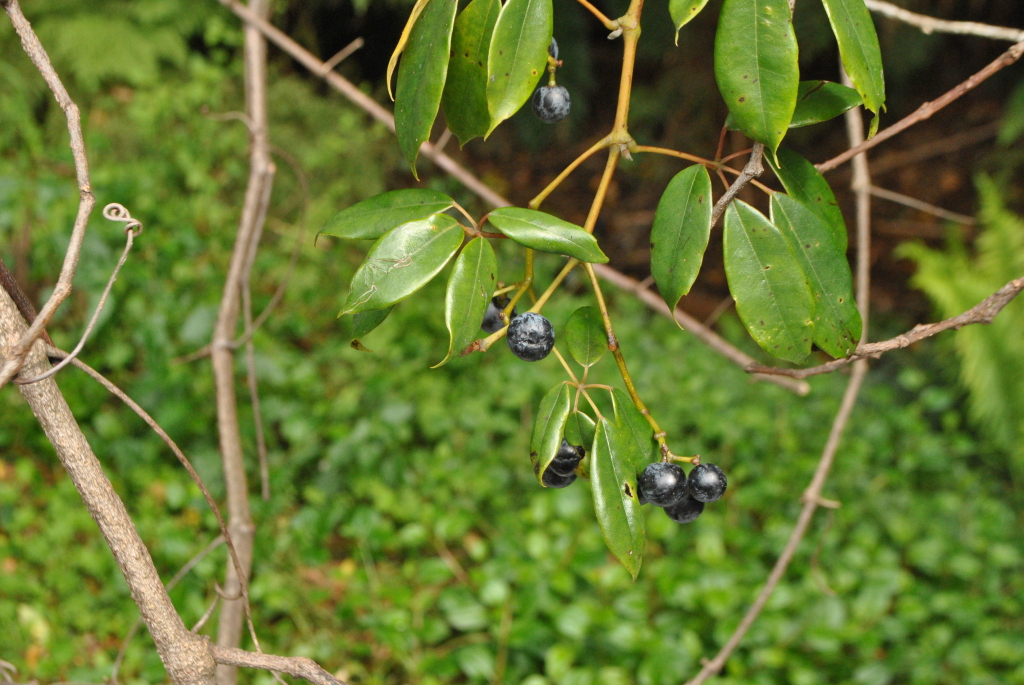Vitaceae
Woody or herbaceous climbers with leaf-opposed tendrils, less commonly shrubs or small trees, evergreen or deciduous; stems sometimes fleshy. Leaves alternate, rarely lower ones opposite, simple or compound; stipules stem-encircling or absent. Inflorescences axillary, leaf-opposed or terminal, cymose or paniculate, often long-pedunculate; bracts usually present. Flowers regular, usually bisexual, rarely unisexual then plants dioecious; calyx short, entire or 4- or 5-toothed; petals 4 or 5, free or united distally, caducous; stamens 4 or 5, opposite petals, inserted at base of disc, anthers free or fused, 2-celled, opening by longitudinal slits; disc usually present, within staminal whorl; ovary superior, usually 2–6-celled, adnate to disc, ovules 2 per cell, erect, axile, style short or absent, stigma capitate or lobed. Fruit a 1–6-celled berry, succulent, often watery; seeds 1–12 with a straight embryo, endosperm ruminate.
14 genera with c. 850 species, chiefly in tropical and subtropical regions; 7 genera in Australia.
Various members of the family are grown as ornamental climbers or creepers, particularly for their bright autumn foliage-e.g. Parthenocissus tricuspidatus (Siebold & Zucc.) Planch. (Boston Ivy) and P. quinquefolia (L.) Planch. (Virginia Creeper), but do not set viable fruit in Victoria.
Jeanes, J.A. (1999). Vitaceae. In: Walsh, N.G.; Entwisle, T.J., Flora of Victoria Vol. 4, Cornaceae to Asteraceae, pp. 120–121. Inkata Press, Melbourne.
 Spinning
Spinning


